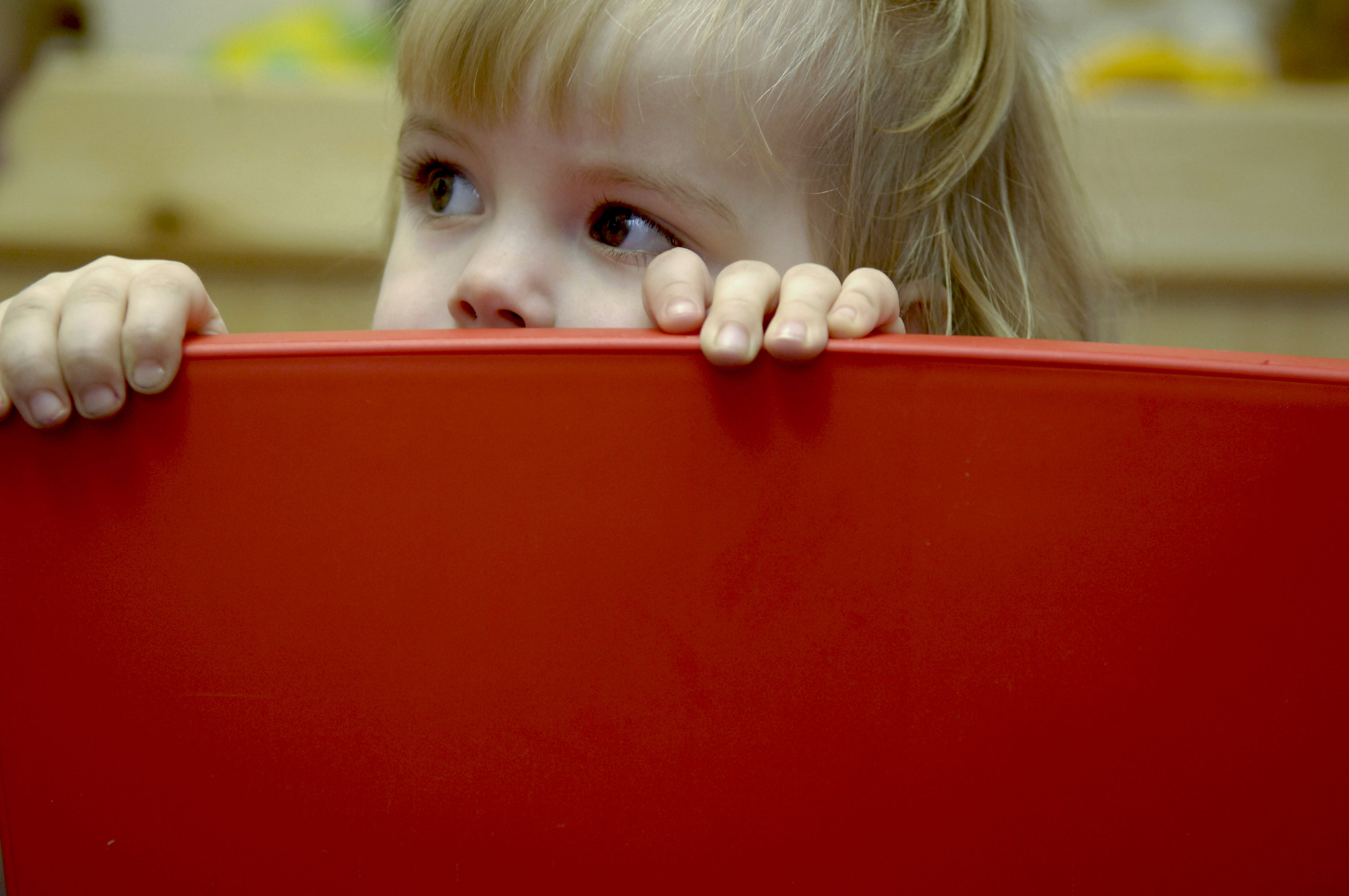Ingrid Burke, RAPSI
November 20 marks the Universal Children's Day. RAPSI has decided to celebrate the occasion with a look at a several unique trends in child protection legislation around the world. In some cases, we will explore the legal grey areas that have given rise to unexpected hotbeds of abuse. In others, we will look at instances where legislation and longstanding cultural tradition face off, leaving children’s rights precariously positioned.
Democratic Republic of Congo: failure to protect young accused witches from their parents
The Democratic Republic of Congo (DRC) came under fire by the US Department of State in last year’s human rights report for failing to adequately implement laws aimed at preventing parents and other adult caretakers from accusing their children of witchcraft and sorcery: “The law provides for a sentence of imprisonment for parents and other adults who accuse children of witchcraft, but authorities did not implement the law effectively.” The report noted as well, “The constitution prohibits parental abandonment of children believed to have committed sorcery. Nevertheless, parents or other care providers sometimes abandoned and abused such children.”
Denmark: high five on the home front; now take a look at the devastation in your wake
The Brits don’t have a monopoly on falling short of protecting the children of their subjects and conquests. Despite its sparkling reputation for protecting the rights of its own children, some have argued that Denmark has fallen short in protecting the rights of the children of Greenland, one of its overseas territories.
In a report released last year, the UN followed up its praise for Denmark’s progress in ensuring the rights of its own children with the concern that, “child rights legislation in Greenland and the Faroe Islands has yet to be harmonized with the principles and provisions of the [UN Convention on the Rights of the Child (Convention).]”
In 2009, Slate’s Jason George reported that Greenland had the highest suicide rate in the world. With an average of 100 suicides for every 100,000 residents, Greenland’s suicide rate nearly doubled that of Japan. The majority of those who took their own lives were teenagers and young adults.
The link between child abuse and a high youth suicide rate is not as tenuous as it may initially appear. Reporting on the subject for Vice, Camilla Stephan reasoned, “The youth of Greenland are dealing with things like sexual abuse (in Greenland, grown women are fewer than grown men, which leads to a high percentage of abuse), alcoholic parents and relatives (as in many native populations worldwide, when a substance like alcohol is introduced, there is no natural resistance and people get completely knocked out), extreme isolation, months at a time of darkness, and then of course the fact that—in such small communities—suicide can be sort of contagious.”
According to Denmark’s National Center for Social Research, many Greenlandic children, “have a hard life because of alcohol and drug abuse in the close family, domestic violence and sexual abuse.” The center further concluded that, “5% of mothers know or suspect that their child has been sexually abused. However, the figure is thought to be much higher, as more than one-third of mothers stated that they had been sexually abused as a child.”
The legal control Denmark currently maintains over Greenland is much weaker than it was as recently as 2009. At that point, Denmark granted the arctic island nation relative autonomy, retaining ultimate control only in certain spheres, such as foreign relations and defense.
Still, the UN Committee on the Rights of the Child was urged Denmark in its most recent report on the nation to actively ensure the protection of the children in its offshore territories. According to a statement by Greenland’s government shortly before the report’s release, UNICEF Denmark has committed to revising Greenland’s children’s rights legislation “with a view to enhance children’s rights in legislation and further promote the Convention in context of the unique Greenlandic conditions.”
This, combined with the 2010 children’s rights strategy “A Safe Childhood,” will prove laudable steps forward for Greenland’s youth. Still, Denmark needs to up its game. As of the report’s release last year, the UN Committee saw it as having “yet to adopt a comprehensive rights-based policy and a harmonized plan of action for the full and effective implementation of the Convention throughout its territory.”
America’s wild west of harsh discipline
A plethora of federal statutes protect the rights of American children, and each state has its own set of laws and procedures for detecting and prosecuting acts of child abuse. The federal and state child abuse laws are bound together in part by the Child Abuse Prevention and Enforcement Act of 2000, which serves to provide federal law enforcement grants to states in order to strengthen the implementation of child abuse laws, and to strive to prevent future incidents thereof. In combination, these state and federal protections ensure a great deal of protection from abuse, and are generally considered to be quite effective in combatting abuse where it does exist. However, there remains in the US and its territories an industry that stands as a veritable wild west for child abuse.
Residential programs have become an increasingly acceptable disciplinary option for American parents bent on improving the conduct of poorly behaved teens. These programs cater to the parents of children with emotional, behavioral, or psychological problems by promising therapy, rehabilitation, education, and tough love. Parents desperate to remedy such issues send their children away to these institutions, many of which are in remote locations, for periods generally ranging from months to years.
This tough love, however, has proved catastrophic in the cases of the many children who have endured physical abuse while enrolled in such programs, and even more so for the few who haven’t made it out alive.
After conducting an extensive investigation into allegations of abuse arising from such facilities, the US Government Accountability Office (GAO) found that, “ineffective management and operating practices, in addition to untrained staff, contributed to the death and abuse of youth enrolled in selected programs.” In addition to having identified thousands of abuse allegations arising from residential programs throughout the US, as well as from American-owned institutions abroad, the GAO testified before Congress that it had examined 10 cases “where a teenager died while enrolled in a private program and found significant evidence of ineffective management in most of the 10 cases.”
The US Congress is in the process of considering a statute aimed at more closely regulating such residential programs. The draft bill is currently being considered by the House Subcommittee on Early Childhood, Elementary, and Secondary Education. Among other things, its enactment would strengthen federal oversight of these programs and require residential programs to disclose information such as any deaths that had occurred within the past five years. Still, its enactment is far from assured. In the meantime these programs remain unsettlingly unregulated.
California: Sex offenders defend their rights to celebrate Halloween
Halloween is a big deal as far as holidays go in the US. On the 31st of each October, children dress up in costumes and wander their cities, going door to door asking for treats. It’s a long-standing tradition – one several Southern California sex offenders aren’t willing to give up without a fight. In California’s Simi Valley, an ordinance passed last Fall prohibited registered sex offenders from setting up any festive decorations or light displays in front of their houses on Halloween. They are further required to post signs in front of their houses warning trick-or-treaters that a registered sex offender resides there, according to a press release issued by the advocacy group California Reform Sex Offender Laws. This past September, five sex offenders and their family members challenged the ordinance in federal court, claiming that the ordinance violated their constitutional rights. Furthermore, according to the claim, the ordinance threatens the safety of sex offenders and their families, by forcing them to turn off all external lights for one night each year, and shames sex offenders, “by mandating that they place a large content-specific sign on their door every year.” According to local news source KTLA, the federal judge considering the case imposed a temporary restraining order on the part of the law requiring sex offenders to post signs on their doors, but left the lighting and decoration stipulations intact.
UK courts take on Pitcairn’s mutineer child rapists… finally
With great power comes great responsibility. As a whole, the UK has a solid set of laws in place to protect its own children from abuse. Its imperial subjects, however, have not always enjoyed the same security, as exemplified in recent years by the Pitcairn Island child rape cases.
The present-day population of Pitcairn – a small island in the South Pacific – is the product of the infamous mutiny on the Bounty. According to the US-based Pitcairn Islands Study Center, the Bounty had set off from England on a mission to collect breadfruit. While in Tahiti collecting the plants, the sailors became very closely bonded with the local ladies. Shortly after leaving the island, it is widely believed that the ship’s commander Lt. William Bligh – a harsh disciplinarian by most accounts – lost his temper on the crew over some allegedly stolen coconuts. The sailors, already disgruntled over having left their Tahitian lovers behind, waged a mutiny. After setting Bligh and others adrift at sea, the mutineers headed back to Tahiti to pick up a few consorts, and then began searching for a place to call home, eventually seeking safe haven in the then-uninhabited and improperly charted Pitcairn Island. The island wasn’t discovered by their British naval pursuers until 1814, by which point most of the initial mutineers had died off.
The CIA world fact book classifies Pitcairn as an “overseas territory of the UK,” whose chief of state is Queen Elizabeth II. Second in rank to the queen is UK High Commissioner to New Zealand, Victoria M. Treadell.
According to an appellate decision by the UK’s Privy Council, the first Pitcairn rape complaint to make its way to Britain was launched in 1996. Two British police officers conducted an investigation on the island, but refrained from pressing charges for lack of evidence – despite the fact that the suspect admitted to having had intercourse with the complainant six times, including before her 12th birthday. According to the Pitcairn law prevailing at the time, it was illegal to have carnal knowledge of a female child of or above the age of 12. The law did not prohibit sex with children under the age of 12. While English law prohibited sex with small children, Pitcairn legal counsel asserted that English law shouldn’t apply due to the fact that it was simply unknown to the historically isolated island nation. Thus the perpetrator was let off with a warning.
Realizing that perhaps it should do a slightly more thorough job of policing its subjects, the UK decided to deploy one police officer at a time, for three months at a stretch to train and support Pitcairn’s one-man police force. The first officer to be deployed launched an investigation into the sexual abuse that turned out to be endemic to the small island society for decades. As a result, four Pitcairn Islanders were convicted of rape under English law, and three were convicted of sexual assault under the same. They appealed their convictions all the way up to the Privy Council, which rejected the claim that the English law didn’t apply because, “The islanders brought the common law of England with them when they settled there. Rape and indecent assault were part of the criminal law of the island long before the [relevant Pitcairn laws] were enacted.”
The Pitcairn affair exposes in its full glory the grey areas that have arisen in the aftermath of the age of empires. In the midst of this confusion, the UK initially let the rape of a child go with a slap on the wrist. A few years later, the UK through the book at the islanders, charging that they’d been operating under English law all along. As we’ll soon see, this specific brand of legal confusion is not unique to the UK, and in fact is an issue that will need to be sorted out in order to ensure that all children – even those native to imperial conquests – will be afforded protection from abuse.
Bermuda: the island paradise where age of consent depends on gender of preference
In Bermuda, the age of consent at which point consensual sex no longer falls into the realm of child abuse or exploitation, is lower for lesbians and heterosexuals than it is for young gay men. According to the US Department of State’s most recent human rights report, the minimum age for consensual lesbian and heterosexual sex is 16, while that for gay (male) sex is 18.
Afghanistan: stigma and shame overshadow justice
A 2011 UN report criticized Afghanistan both for the legislative weaknesses and law enforcement issues that fuel the sexual abuse and exploitation of the country’s children: “The Committee is extremely concerned by the high level of violence against children in the [country] and abhors that child victims of abuse and violence, especially girls, are often treated as perpetrators and sent to juvenile rehabilitation centres, while most of the perpetrators of violence against children enjoy impunity.”
According to the UN, key to the problem is that the crime of rape has not been defined and distinguished clearly enough under Afghan law.
Other cultural issues come into play as well, such as the “shame and stigma” that tend to be attached to abused children rather than to their abusers. Girls in this situation risk falling victim to honor killings on the basis of this shame and stigma.
Furthermore, other types of sexual abuse, including sexual exploitation and abuses arising from homosexual relations, are not included in Afghanistan’s penal code. Another issue is that the country lacks resources that would allow victims of sexual abuse to file complaints or seek protection and recovery.
This is especially troubling considering the country’s growing bacha bazi problem. In its 2011 human rights analysis of Afghanistan, the US Department of State described the practice of bacha bazi as, “a practice in which young boys are sold to powerful local figures and businessmen and trained to dance in female clothes for male audiences and then used and traded for sex.” Without laws on the books that reach sexual exploitation arising from homosexual relations, it goes without saying that this practice can’t be adequately regulated.
Singapore: caning, in the best interest of the child
When Singapore ratified the Convention on the Rights of the Child in 1995, it stipulated a reservation that seemed slightly disconcerting given the overall goal of the convention – that of the protection of children. In ratifying, Singapore stipulated that certain justified beatings are in line with the Convention. The reservation allows for: “the judicious application of corporal punishment in the best interest of the child.”
Singapore’s code of criminal procedure prohibits the caning of women, men over the age of 50, and men on death row. For everyone else – kids included – caning is fair game.
In an effort to cut Singapore a bit of slack, it should be noted that caning is less severe, quantitatively and qualitatively, for children. Under Singaporean law, “The maximum number of strokes of the cane that can be inflicted on the offender at any one time is 24 strokes for an adult and 10 strokes in the case of a juvenile.” Furthermore, the code establishes that for boys, “caning shall be inflicted with a light rattan.” Men, on the other hand, can be caned with a rattan with a diameter of up to 1.27 cm.
The UN Committee on the Rights of the Child was not shy last year in expressing its disregard for Singapore’s continued affinity for judiciously applying corporal punishment, reiterating its “deep concern that corporal punishment, including caning, is still considered a lawful form of discipline in the family, schools and institutions.”
Still, it could be worse. Whereas corporal punishment is imposed against children under certain circumstances in Singapore, Eritrea has made no effort to curb it in any circumstances according to the latest US Department of State human rights report, which stated, “There are no laws against child abuse and no government programs to combat the problem. Physical punishment was widespread and socially accepted.”
Looking back, we see ten countries. With the exception of Eritrea, each currently has in the books a relatively commendable set of child protection laws. Still, each has its own unique set of shortcomings. In imploring Denmark to take better care of Greenland’s children, the Committee on the Rights of the Child urged the country to take context into consideration. Laws are never one-size-fits-all. A thorough understanding of a country’s cultural traditions and history can give a great deal of insight into the specific issues that need to be prioritized in establishing appropriate child protection legislation. Without proper legislative tailoring, these uniquely modern issues will remain unabated, and the safety of our world’s children will hang in the balance.



